Queen City Crime: The 1877 murder of Diamond Bessie in Texas scandalized Cincinnati
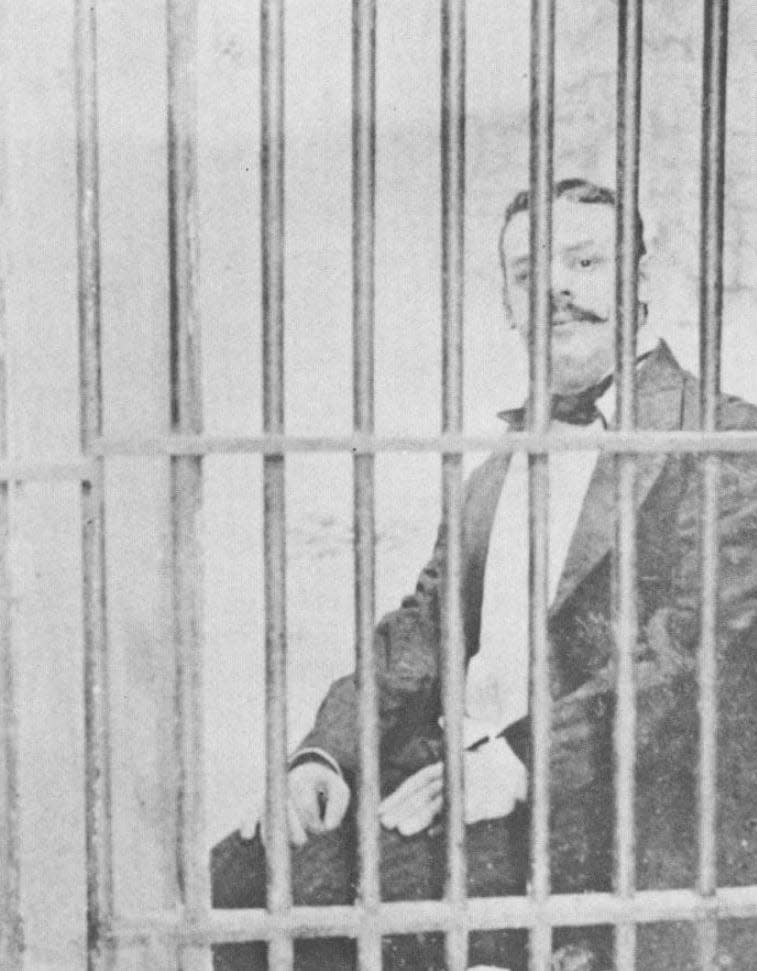
- Oops!Something went wrong.Please try again later.
The Cincinnati region has been connected to monumental crimes and criminals in years past. Here is a look at one of them.
The hook: It was a crime related to one of Cincinnati’s most prominent and successful businessmen. On Feb. 17, 1877, the eldest son of wealthy jeweler and banker Maier Rothschild was discovered with a bullet in his head outside of a popular bar on Vine Street.
Reported The Enquirer at the time: “The ball had entered back of the right temple, and passing diagonally forward, behind and through the orbit of the right eye, had lodged under the skin at the bridge of the nose.”
There, a doctor removed the bullet – flattened by the victim’s skull – and predicted the wound would prove fatal.
The victim was Abraham “Abe” Rothschild, a 22-year-old ne’er-do-well who had upset his father so much that Maier Rothschild cut him off from the family fortune the previous year. The son’s reputation was dubious enough that despite Abe having told people that he feared for his life, and despite a witness saying a man had cried “murder!” just before the gunshot echoed, The Enquirer skeptically wrote: “Whether this was an accident, an attempt at assassination or an attempt at self-destruction the world will hardly know with certainty, unless the victim recovers sufficiently and tells the story himself.”
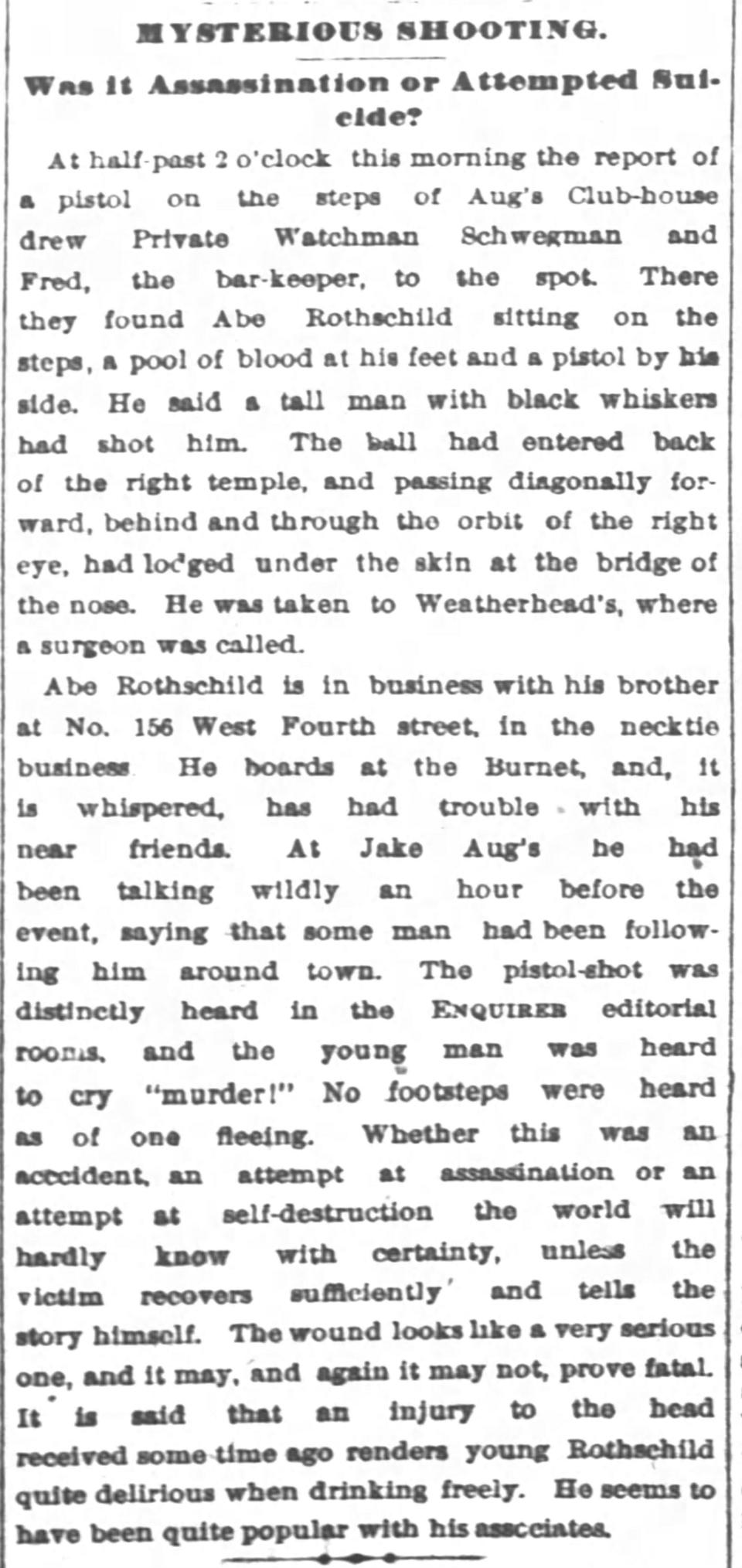
But Abe Rothschild did survive, and officials quickly learned that he was wanted in Texas in one of the highest-profile murders of the late 19th century – one that triggered two trials of the century, as well as a slew of ghost stories that permeate still today. The real victim in this case turned out to be a sex worker best known as “Diamond Bessie.”
Queen City Crime: George Remus, the wife-killing 'King of Bootleggers'
The family: The Rothschild family was well known enough in Cincinnati at the time to warrant frequent newspaper mentions. Maier Rothschild ran a jewelry shop downtown on Fifth Avenue. He also owned a slew of property and at least one bank.
Based on 1870 and 1880 Census data, Maier and his wife, Rosa, had four children. Abe was born in 1855, followed two years later by Charley, and two years after that, Jacob. The couple’s only daughter, Ida, came around 1876.
That’s about the same time something happened between Abe and his father that Maier quit supporting his oldest son. Not surprisingly, the details about that rift weren’t publicized at the time, though the book “Murder Most Texan” posits that the elder Rothschild had grown impatient with his son’s “drinking, gambling and womanizing.”
After the fallout, Abe Rothschild headed to Detroit, where he met a captivating woman called Bessie Moore. Using euphemisms of the day, Bessie was a “sporting girl” who worked in a “resort.” Her customers routinely fell for her, but her heart was set on something else: diamonds.
“She often took jewelry in trade for her service,” said Mitchel Whitington, an author and historian who told this tale of murder in a tourism video for Visit Jefferson in Texas.
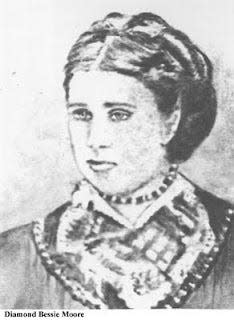
As was common for sex workers of the era, Bessie changed her name when she chose her vocation. She was born Annie Stone and raised in Syracuse, New York. Bessie was her childhood nickname. Her father owned a shoe store in town and was heartbroken when his daughter ran away from home at the age of 15 to live as a mistress to a man surnamed Moore. While the two never married, Bessie took on the man’s surname to help quell the Victorian-era rumors. She kept the name after the two split.
Having been raised in luxury, Abe Rothschild played the part of a well-mannered baron and won Bessie over. The two traveled the country as husband and wife. But behind closed doors, Rothschild was brutal, often leaving Bessie with black eyes, fat lips and bruised cheeks. The abuse was so bad that Abe was even arrested once – a rare occurrence in the 19th century, when laws were just being enacted to allow women to own property.
Bessie stood by Rothschild’s side, routinely bailing him out of jail. At one point, he rented her a room in a Cincinnati boarding house owned by Frank Wright, run by Wright’s wife (identified only as Miss Wright in newspaper accounts). In June 1876, Miss Wright said that she approached Bessie because Rothschild owed back rent. Bessie sobbed and said Rothschild had taken all of her money and that all she had left were her diamonds, which she refused to give him.
Later, The Enquirer wrote that several people could see Rothschild beating “a naked woman” in one of Wright’s rooms and threatened to alert police. Miss Wright intervened and “found Rothschild beating and choking (Bessie) in a fearful manner.” Miss Wright said she stopped the beating and lectured Rothschild about treating a woman so poorly.
All this apparently did was prompt Rothschild to take Bessie away from Cincinnati. Soon, they made their way to Jefferson, Texas, where things took a darker turn.
The crime: Abe and Bessie registered at Jefferson’s high-end Brooks House Hotel on Vale Street as Mr. and Mrs. A. Monroe. While their names were fake, their marital status apparently wasn’t: Whitington said the two were married in Illinois barely a week before their Texas arrival.
The pair caught everyone’s eye, not just because Jefferson was a small, close-knit town, but also because of the woman’s good looks and penchant for wearing obviously expensive jewelry. She reportedly had one diamond ring worth more than $500 – the equivalent of about $13,000 today – and diamond drop earrings worth three times that much. Townsfolk overheard the woman’s name as Bessie and, given her diamond collection, dubbed her “Diamond Bessie” when gossiping to neighbors. Those same townsfolk would later help police describe the Monroes' activities during their stay, which typically began with something mundane like ordering a drink at the bar and ended with a fight. On Saturday, Jan. 20, 1877, hardware store employee M.T. Matthews said that he recalled “Mr. Monroe” came to the shop to buy a pistol.
The day after that, witnesses spotted the couple with a picnic basket headed toward a wooded area. Later, they saw the husband leave with his wife’s jewelry and luggage, but Mrs. Monroe was nowhere to be seen.
Two weeks later, after a storm dumped inches of snow on the town, trapping most residents inside their homes for days at a time, a house servant found Bessie’s body in some brush as she trudged to find fire kindling. Bessie was beautifully dressed in expensive clothes and surrounded by the remnants of a picnic lunch. She also had a bullet hole through her temple. And her diamonds were missing.
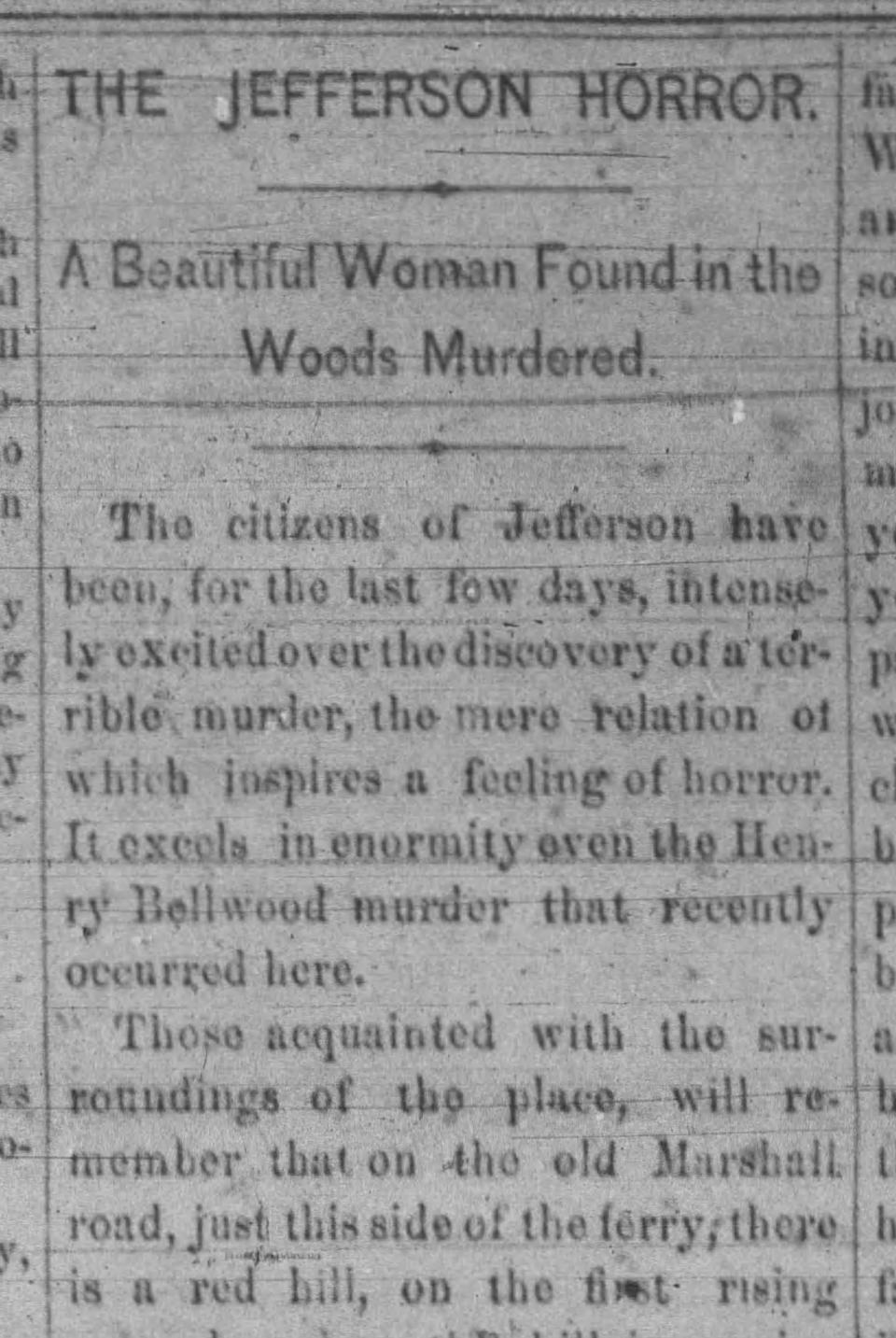
The investigation: After the discovery of Diamond Bessie’s body, police learned that some residents asked “Mr. Monroe” where Bessie went.
“He replied that she was having dinner in a local restaurant,” Whitington said. “Even later, when asked again, he said that she had stayed across the river with friends.”
Police began backtracking and learned that during some chitchatting with locals, the couple mentioned visiting Marshall, Texas, before Jefferson. They took a photo of Bessie’s corpse to the town 16 miles away, where a hotelier recognized the grisly image and pulled out the registry: They had listed their names there as A. Rothschild and wife.
That led police to Cincinnati, where Abe Rothschild had just the previous night been shot in the head. Once word spread that Rothschild was wanted for murder in Texas, the narrative was so entrenched that one headline read: A Murderer Attempts Suicide.
It took two years for the case to reach trial. As Rothschild waited, his wealthy family returned to support him, fitting him with a glass eye, fancy suits and even fancier lawyers.
This didn’t sit well with jurors. The jury foreman started deliberations by sketching a noose on the wall, autographing the artwork and declaring that his verdict. Within hours, the other 11 jurors followed suit. The sentence for murder was mandatory: Rothschild would hang.
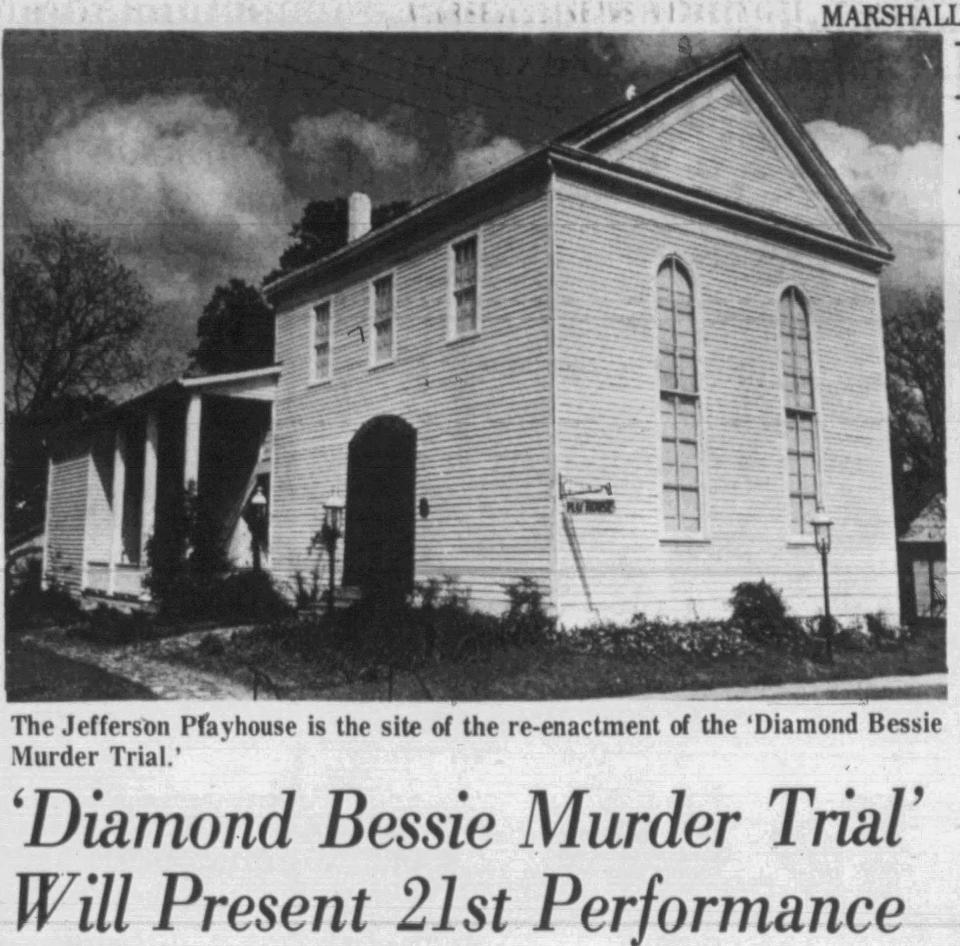
Queen City Crime: Ohio's first assassinated president and his killer's link to a sex cult
But Rothschild’s lawyers appealed and Rothschild got a new trial, which began Dec. 16, 1880, nearly four years after Bessie’s body was discovered. This time, Rothschild’s lawyers called additional witnesses to rebut testimony they knew was coming. One woman said she saw Bessie four days after the date of the supposed picnic in the company of an unknown man.
This time, the jury took four hours to acquit Rothschild. The murder of “Diamond Bessie” Moore remains unsolved to this day.
Enquirer journalist Amber Hunt is host of the podcast "Crimes of the Centuries" and co-founder of the Grab Bag Collab podcast network.
This article originally appeared on Cincinnati Enquirer: 1877 murder of Diamond Bessie in Texas scandalized a wealthy family

